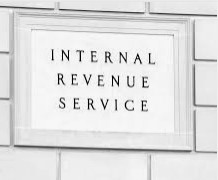 Part II is a continuation from yesterday’s October 14, 2013 post. See Part I HERE.
Part II is a continuation from yesterday’s October 14, 2013 post. See Part I HERE.
Nontraditional investments favored by many self-directed IRAs can lead to unexpected taxation of unaware IRA account holders.
Example 2: IRA-Owned LLC Invests in Real Estate Partnership
Setup. Mark, a retired airline pilot with $1.5 million in his 401(k) account, was afraid of another stock market meltdown and viewed real estate investments as a safer alternative and a diversification technique for his retirement savings. After learning about SDIRAs from a friend, he did some preliminary research online. Mark quickly found numerous IRA custodians and companies that promoted “checkbook control IRAs” (i.e., the SDIRA/LLC concept discussed above) and decided that the lower annual custodian fees and overall control made the SDIRA/LLC the best option for him.
Mark executed a partial rollover of his 401(k) account into his new SDIRA. Subsequently, the SDIRA invested all but $300 into a newly formed LLC, thus creating an SDIRA/LLC structure (it is typical to leave the smallest amount of cash in the IRA as possible). From there, the IRA custodian had very little involvement because all of the investments were made at the LLC level, with Mark facilitating transactions as the LLC’s sole manager.
Investment. Mark’s goal for his SDIRA/LLC was to invest in residential rental real estate, either directly out of the LLC or through a “project LLC” (i.e., a partnership) with other investors. Mark found a real estate investment group that frequently Read More

 Part II is a continuation from yesterday’s October 14, 2013 post. See Part I
Part II is a continuation from yesterday’s October 14, 2013 post. See Part I 

















Recent Comments